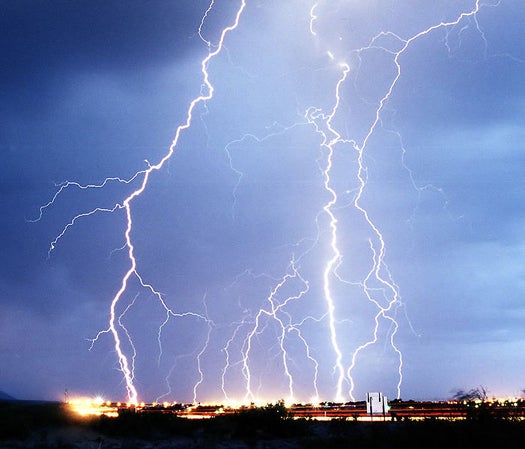Electricity Out of Thin Air Could Be The Next Big Power Source
Geothermal, solar, vibration harvesting: step aside for hygroelectricity

We’re already making great strides at pulling electricity from the motion of the air and from the photons that stream through it, but what about pulling electric charges right out of the air itself? Researchers have solved a mystery about how electricity forms in the atmosphere, and in doing so may have found a way to pull electricity right out of the air.
We know a lot about how to manipulate electricity, but the way it forms naturally in the atmosphere has long stymied scientists. But research unveiled today at the National Meeting of the American Chemical Society has defined the mechanism by which water vapor in the air become charged, a discovery which could lead to devices capable of creating electricity from the atmosphere’s own charges.
For a long time, scientists though that water droplets adrift in the atmosphere remained electrically neutral even after attaching themselves to dust particles or other particulates in the atmosphere. But recent evidence has suggested otherwise, which led Dr. Fernando Galembeck and his colleagues to dig deeper. What they found, and then proved in the lab, is that in fact water in the atmosphere does pick up a slight charge.
Using small particles of aluminum phosphate and silica — two particles found commonly in the atmosphere — they showed that in the presence of water vapor silica particles become more negatively charged. Aluminum phosphate grows slightly more positively charged. This building of charges in humid air can accumulate and be transferred to other objects, explaining phenomena like the charge buildup where steam escapes from boilers that had baffled scientists for centuries.
Galembeck and company call the quality “hygroelectricity,” meaning “humid electricity.” The property could lead to generators that pull charge right out of humid air to power buildings, as well as to panels that prevent lightning from striking in certain areas.